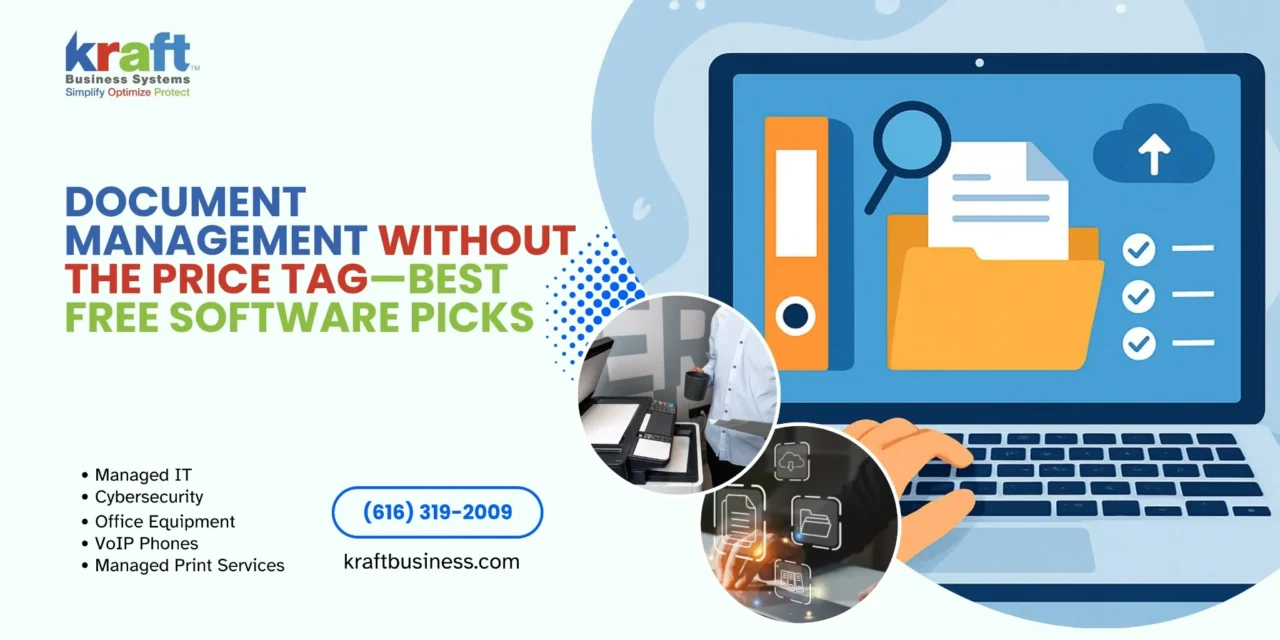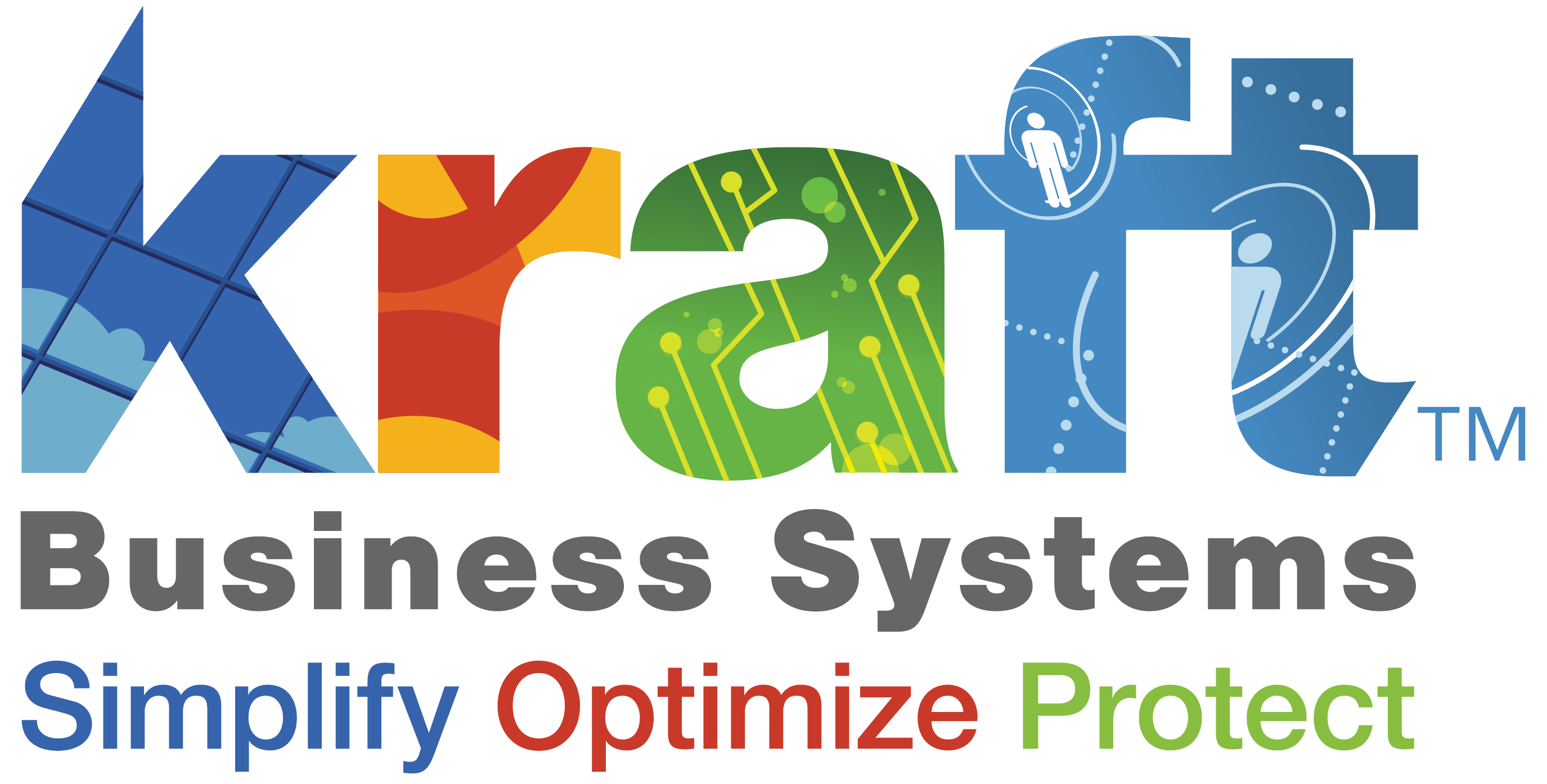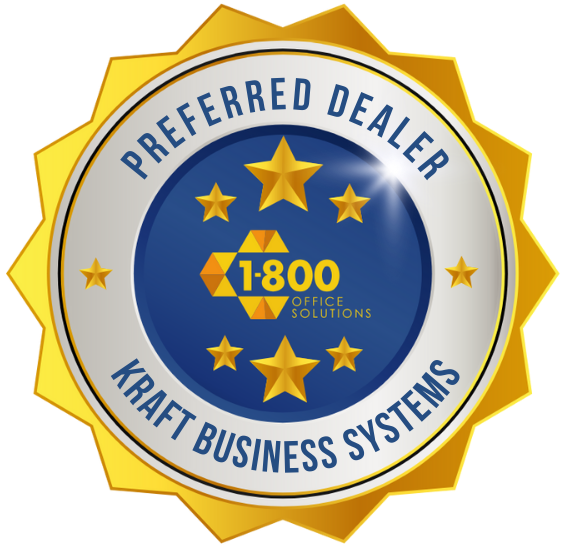Document management system free software options have transformed how mid-sized businesses handle their digital files without breaking the budget. The COVID-19 pandemic exposed a harsh truth: businesses without proper document organization struggled under the weight of disorganized files and remote work challenges.
Top Free Document Management Systems for 2025:
- OpenDocMan – Unlimited users, ISO 17025 compliant, supports 8 languages
- Paperless-ngx – OCR in 100+ languages, machine learning auto-tagging
- LogicalDOC Community – Web-based, LGPL license, workflow automation
- Bitrix24 – 5GB free storage, unlimited users, real-time collaboration
- OpenKM – Records management, automated tasks, multilingual support
Your business generates countless documents daily – contracts, invoices, reports, emails. Without a centralized system, finding the right file becomes a time-consuming hunt through scattered folders and email chains.
Free document management systems solve this problem by providing:
- Centralized storage for all your business documents
- Advanced search capabilities to find files in seconds
- Version control to track changes and prevent changes
- Role-based access to keep sensitive information secure
- Workflow automation to streamline approval processes
Over 10 million companies have already switched to digital document management solutions. The best part? You don’t need a massive IT budget to get started.
Why Your Business Needs a Document Management System
A document management system creates a central repository where all your business documents live, breathe, and stay organized. Think of it as the difference between a messy desk drawer and a well-organized filing cabinet – except this cabinet is digital, searchable, and accessible from anywhere.
The three fundamentals of effective document management are centralized storage, limited access controls, and comprehensive change tracking. These elements work together to transform chaotic file systems into streamlined information hubs.
Version control becomes critical when multiple team members collaborate on documents. Without it, you end up with files named “ContractFinalFINALv2REAL_FINAL.docx” scattered across different computers. A proper DMS maintains a clear audit trail of who changed what and when, enabling easy rollbacks when needed.
Remote collaboration has become essential for modern businesses. Our Document Management Process approach helps teams work together seamlessly, whether they’re in our Grand Rapids office or working remotely from Traverse City.
Regulatory compliance adds another layer of complexity. Industries must maintain specific document retention schedules, provide audit trails, and ensure data security. Free DMS solutions like OpenDocMan are designed to comply with ISO 17025 standards right out of the box.
Key Benefits In Numbers
The statistics around document management efficiency are compelling:
- Information retrieval time drops from hours to seconds with proper indexing and search capabilities
- Print spending can be reduced by up to 30% when documents are digitized and shared electronically
- Error rates decrease significantly when version control prevents outdated documents from circulating
Companies report that automated document workflows can save 2-3 hours per employee per week. For a team of 20 people, that’s 40-60 hours of productivity gained weekly – equivalent to hiring an additional full-time employee.
Document Management System Free Software: Core Features Checklist
Shopping for document management system free software can feel overwhelming when you’re staring at dozens of feature lists and technical specifications. After helping businesses across Michigan choose the right document systems, we’ve learned that certain features make the difference between a solution that transforms your workflow and one that gathers digital dust.
Optical Character Recognition (OCR) should be your first priority if you deal with paper documents or scanned files. Paperless-ngx stands out here because it uses the Tesseract engine to recognize text in more than 100 languages. This means that old contract you scanned three months ago becomes instantly searchable when you need to find that specific clause about payment terms.
Metadata tagging might sound technical, but it’s really just a fancy way of adding digital sticky notes to your files. Think of it as creating a custom filing system where you can tag invoices by vendor, contracts by renewal date, or reports by department. This transforms the dreaded “I know it’s here somewhere” search into a quick, precise retrieval.
Role-based access control keeps your sensitive documents secure while still enabling teamwork. You can give your accounting team full access to financial records while limiting sales staff to read-only access. It’s like having different keys for different rooms in your office building.
Workflow automation eliminates the email chains and sticky note reminders that slow down approvals. Set up automatic routing so expense reports go directly to managers, contracts flow to legal review, and completed documents notify all stakeholders. Your documents move through your business processes without you having to remember who needs to see what.
Mobile applications have become essential rather than optional. When you’re at a client meeting and need to quickly scan a signed contract or access project specifications, having Android and iOS apps means your document system travels with you.
API integrations connect your document system to the tools you already use. Whether it’s your CRM, accounting software, or project management platform, APIs create bridges that eliminate duplicate data entry and keep information synchronized.
Scalability matters even with free solutions. Your document management needs will grow as your business expands, so choose platforms that can handle increased storage, more users, and additional features without requiring a complete system replacement.
Our Advanced Document Management System guide explores these features in greater depth, including real-world implementation strategies we’ve refined through our work with businesses throughout Michigan.
Must-Have Security & Compliance Tools
Security features in document management system free software can’t be treated as nice-to-have extras. Your business documents contain sensitive information that needs protection from the moment they enter your system until they’re properly disposed of according to retention policies.
Encryption protects your documents both when they’re stored on servers and when they’re traveling across networks. Look for solutions that use industry-standard encryption protocols – this isn’t an area where “good enough” actually is good enough.
Audit logs create a detailed history of every interaction with your documents. Who opened the client contract last Tuesday? What changes were made to the project proposal? When was the financial report accessed? These logs provide the accountability trail that regulatory compliance often requires and help track down issues when they arise.
Retention rules automate the lifecycle management of your documents according to legal requirements. Some financial records must be kept for seven years, while other documents can be safely destroyed after three. Automated retention prevents the accumulation of unnecessary files while ensuring compliance with regulatory requirements.
Backup systems provide the safety net that keeps your business running when things go wrong. The best free solutions either include automated backup capabilities or integrate seamlessly with your existing backup infrastructure.
Collaboration & Workflow Essentials
Document management becomes truly powerful when it enables seamless teamwork rather than just organized storage. The collaboration features in your chosen system can make the difference between a tool that helps your team work together and one that creates new bottlenecks.
Real-time co-editing eliminates the version control nightmares that plague teams sharing documents through email. Multiple team members can work on the same document simultaneously without creating conflicting versions or overwriting each other’s changes. Bitrix24 offers this capability with unlimited free users, making it particularly attractive for growing teams.
Notification systems keep everyone informed about document changes, review requests, and approval deadlines without cluttering email inboxes. Smart notifications alert the right people at the right time about the documents that matter to them.
Task routing automatically assigns documents to appropriate team members based on predefined rules and workflows. New expense reports can automatically go to department managers, while contracts over a certain value route to legal review.
Remote work has transformed these collaboration features from conveniences to necessities. Our Document Management for Remote Teams resource addresses the specific challenges of keeping distributed teams connected and productive through effective document collaboration.
Best Free DMS Platforms to Try in 2025
Finding the right document management system free software can feel overwhelming with so many options available. After helping businesses across Michigan implement these solutions, we’ve narrowed down the field to the platforms that actually deliver on their promises.
OpenDocMan consistently impresses us with its straightforward approach to document management. This open-source gem offers unlimited users and storage without any sneaky restrictions. What makes it special is its built-in compliance with ISO 17025 standards – perfect if you’re in a regulated industry. The system speaks eight languages fluently, from English and German to Portuguese and Turkish, making it ideal for diverse teams.
Paperless-ngx is like having a super-smart filing assistant that never gets tired. Its OCR technology can read documents in over 100 languages, and the machine learning features automatically figure out who sent what and how to categorize it. The system saves everything in PDF/A format alongside the originals, so you get the best of both worlds – searchable text and pristine document preservation.
LogicalDOC Community Edition takes the hassle out of deployment with its web-based interface. No software installations, no compatibility headaches – just point your browser and start managing documents. The GNU Lesser General Public License means you can modify it to fit your exact needs without worrying about licensing restrictions.
Bitrix24 brings collaboration to the forefront with unlimited free users and 5GB of storage. Over 10 million companies have jumped on the Bitrix24 bandwagon, and it’s easy to see why. Real-time document editing keeps everyone on the same page, literally.
OpenKM rounds out our list with its focus on workflow automation and customization. This platform doesn’t just store documents – it actively helps move your business processes forward with automated tasks and intelligent routing.
Comparison of Document Management System Free Software Options
| Platform | Storage Limit | User Limit | Key Strengths | Best For |
|---|---|---|---|---|
| OpenDocMan | Unlimited | Unlimited | ISO compliance, multilingual | Regulated industries |
| Paperless-ngx | Server-dependent | Unlimited | Advanced OCR, ML tagging | Heavy scanning needs |
| LogicalDOC CE | Server-dependent | Unlimited | Web-based, no client install | Distributed teams |
| Bitrix24 | 5GB free | Unlimited | Collaboration tools, real-time editing | Small collaborative teams |
| OpenKM | Server-dependent | Unlimited | Customization, workflow automation | Process-heavy organizations |
The pattern here is clear: open-source solutions typically offer unlimited everything (within your server’s capacity), while cloud-based freemium options trade storage limits for convenience.
Pros & Cons Snapshot
Open-source platforms give you complete control over your document destiny. You own your data, customize everything, and never worry about vendor lock-in. The community support can be surprisingly robust, with passionate developers constantly improving the software. However, you’ll need some technical know-how to get these systems purring smoothly.
Cloud freemium options flip the script entirely. Setup takes minutes instead of hours, updates happen automatically, and professional support is usually just a click away. The trade-off comes in flexibility and storage limits – you’re playing in someone else’s sandbox with their rules.
The learning curve varies dramatically between platforms. Document management system free software like Bitrix24 feels familiar if you’ve used modern collaboration tools. Meanwhile, solutions like OpenKM might require more patience as you explore their extensive customization options.
Hidden costs lurk in unexpected places. Open-source solutions might seem free until you factor in server hosting, technical support, and the time investment for setup and maintenance. Cloud platforms often nudge you toward paid upgrades once you hit their limits or need advanced features.
Choosing & Implementing the Right Free DMS
Picking the perfect document management system free software feels overwhelming when you’re staring at dozens of options. We’ve walked countless Michigan businesses through this journey, from small startups in Grand Rapids to growing companies in Lansing, and we’ve learned that success comes down to asking the right questions upfront.
Start by getting brutally honest about your current document chaos. How much time does your team waste hunting for files? Are people emailing documents back and forth because they can’t find the latest version? Do you have compliance requirements breathing down your neck? These pain points will guide you toward the features that actually matter.
The smartest approach we’ve seen is the pilot rollout strategy. Don’t try to digitize your entire company overnight – that’s a recipe for frustrated employees and failed implementations. Pick one department or document type to test drive your chosen system. Maybe start with your HR department’s employee files or your accounting team’s invoices.
Data migration sounds scary, but it doesn’t have to be. Before you start uploading thousands of files, take time to clean house. Delete those duplicate contracts, organize your folder structure, and establish naming conventions that make sense. Your future self will thank you when you can actually find what you’re looking for.
The make-or-break moment comes with user training. The fanciest system in the world becomes digital shelf-ware if your team doesn’t know how to use it. Plan hands-on training sessions that show people exactly how the new system will make their daily work easier, not harder.
Our Build a Document Management System guide walks through each implementation step in detail, while our Integrated Document Management Solutions resource covers how to connect your DMS with other business tools.
Scaling Document Management System Free Software with Your Business
Your document needs will evolve as your business grows, and the best document management system free software options are built with this reality in mind. The key is choosing a system that can stretch with you rather than one you’ll outgrow in six months.
Modular add-ons are your friend here. OpenKM lets you start with basic document storage and add electronic signatures, barcode scanning, or advanced reporting as your needs develop. This approach keeps things simple initially while preserving future flexibility.
API integration capabilities become crucial as you add more business tools to your tech stack. Look for systems that play nicely with your CRM, accounting software, and other essential platforms. REST and SOAP APIs might sound technical, but they’re what allow different systems to talk to each other seamlessly.
The cloud versus on-premises decision affects how easily you can scale. Self-hosted solutions give you unlimited storage space but require you to manage servers and backups. Cloud-based options handle the technical heavy lifting but may have storage limits as you grow.
Don’t forget about your backup strategy – it becomes more important as your document collection grows. Automated backups are essential, and you’ll want to test your recovery procedures regularly. Nothing ruins your day quite like finding your backup system wasn’t actually working when you need it most.
Best Practices for a Smooth Rollout
Rolling out a new document management system successfully requires attention to both the technical and human sides of change. We’ve seen too many great systems fail because organizations focused only on the technology.
Change management starts with clear communication about why you’re making this switch. Help people understand how the new system will solve their daily frustrations. Address concerns head-on and celebrate early wins to build momentum throughout your organization.
Metadata standards prevent your system from becoming a digital junk drawer. Define which fields are required, establish consistent naming conventions, and create standardized tags before anyone starts uploading documents. A little structure upfront saves massive headaches later.
Governance policies keep your system organized as it grows. Establish clear rules about document retention, access permissions, and approval workflows. Write these policies down and make sure everyone understands them – verbal agreements have a way of being forgotten or misremembered.
Performance testing with real-world conditions helps you avoid nasty surprises after launch. Test bulk uploads, multiple users accessing the system simultaneously, and search performance with realistic amounts of data. It’s better to find limitations during testing than during your first busy Monday morning.
Frequently Asked Questions about Free DMS
Let’s address the most common questions we hear from businesses considering document management system free software. These concerns come up regularly when we help companies across Michigan make the switch from paper-based systems.
What is the main difference between free and paid DMS?
The core difference isn’t as dramatic as you might expect. Free document management systems handle the essential tasks beautifully – storing documents, organizing files, providing search capabilities, and managing basic access controls.
Paid systems typically add professional technical support when things go wrong, along with advanced workflow automation that can handle complex approval processes. You’ll also find improved integration capabilities with enterprise systems, unlimited cloud storage without server management, and custom reporting features that generate detailed analytics.
However, many free solutions surprise businesses with their comprehensive feature sets. OpenDocMan delivers ISO compliance and multilingual support, while Paperless-ngx offers machine learning document tagging that rivals expensive commercial solutions.
The real question isn’t whether free systems work – they absolutely do. It’s whether your business needs the premium features and professional support that come with paid solutions.
Can free DMS tools keep my documents secure?
Absolutely. Security concerns about free software often stem from outdated assumptions. Reputable document management system free software options provide enterprise-grade protection that would make many paid systems jealous.
Encryption capabilities protect your documents both when they’re stored and when they’re being transferred between users. Role-based access controls let you set exactly who can see what documents, with permissions as detailed as you need them.
Audit trails track every interaction with your documents – who opened what file, when changes were made, and what those changes were. This creates the paper trail that compliance audits require.
OpenDocMan includes secure URL parameters and fine-grained user permissions right out of the box. Paperless-ngx takes a privacy-first approach, keeping all your data local and never transmitting information to external servers.
The security strength comes from the open-source nature of these systems. When thousands of developers can examine the code, security vulnerabilities get found and fixed quickly.
Will free DMS software integrate with the tools I already use?
Integration flexibility is actually where many free systems shine brightest. Open-source solutions typically offer more integration options than their commercial counterparts because developers aren’t restricted by licensing agreements or proprietary formats.
API connections through REST and SOAP interfaces let you connect document management with your existing business systems. LDAP and Active Directory integration means employees can use their existing login credentials. Email integration allows documents to flow directly into your system from email attachments.
Cloud storage connectors work with Google Drive, Dropbox, and OneDrive if you’re already using those platforms. Database support covers MySQL, PostgreSQL, and Oracle systems that might already be running your business operations.
LogicalDOC provides both SOAP and REST APIs for custom integrations, while Bitrix24 offers extensive third-party connections. The open-source nature of many free solutions means you can even modify the integration code if you have specific requirements.
The integration capabilities often exceed what small and medium businesses actually need, making free solutions surprisingly future-proof as your technology stack evolves.
Conclusion
Your journey toward better document management doesn’t have to break the bank. Document management system free software has evolved far beyond basic file storage into powerful business tools that rival expensive enterprise solutions. The options we’ve explored prove that you can get professional-grade features without the professional-grade price tag.
Whether you choose OpenDocMan for its ISO compliance or Paperless-ngx for its incredible OCR capabilities, you’re getting access to technology that was once reserved for Fortune 500 companies. The open-source community has created something remarkable – business tools that actually serve businesses, not profit margins.
The change starts with understanding what you really need. Too many organizations jump into document management thinking they need every bell and whistle, when what they really need is a system that makes finding files easier than losing them. Start simple, grow smart.
At Kraft Business Systems, we’ve watched businesses across Michigan find what happens when document chaos becomes document clarity. The small manufacturer in Lansing who cut their invoice processing time in half. The accounting firm in Grand Rapids who eliminated those frantic searches for client files. The construction company in Traverse City who finally got their permits organized before inspection deadlines.
These success stories share common elements: careful needs assessment that identified real problems, smart platform selection that matched capabilities with requirements, patient pilot testing that worked out the kinks, thorough user training that got everyone on board, and continuous optimization that kept improving the system over time.
The future holds exciting possibilities for document management. Artificial intelligence will make document tagging even smarter. Blockchain technology will provide unbreakable audit trails. Mobile capabilities will continue expanding until your phone becomes your filing cabinet. The best part? These innovations typically appear in free solutions faster than paid ones, thanks to the rapid pace of open-source development.
For deeper insights into where document management technology is heading, our Document Management Trends analysis covers the innovations that will shape how we handle business information.
The time for action is now. Every day you spend hunting through disorganized folders is a day your competitors spend being more productive. Every hour your team wastes on version control chaos is an hour they could spend growing your business. Every document that gets lost or corrupted is a problem that could have been prevented.
The free solutions we’ve covered provide everything most businesses need to eliminate paper chaos and boost productivity. Choose the platform that feels right for your team, follow the implementation steps we’ve outlined, and prepare to wonder why you waited so long to make the change.
Ready to transform how your organization handles information? Start exploring these free options today, and remember that Kraft Business Systems is here to help when you need guidance, support, or integration with your existing technology infrastructure. Check out our comprehensive Document Management System solutions to see how we can support your document management journey.













